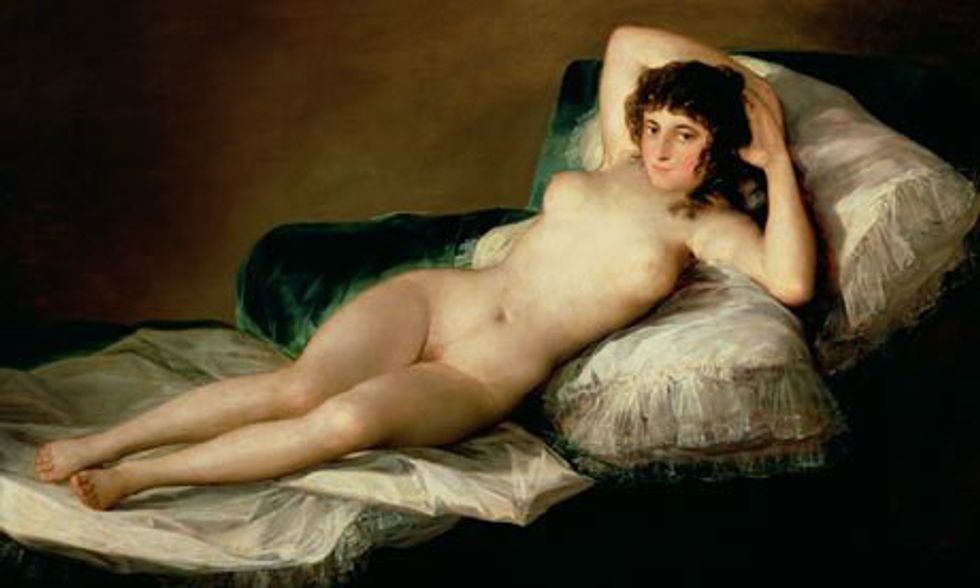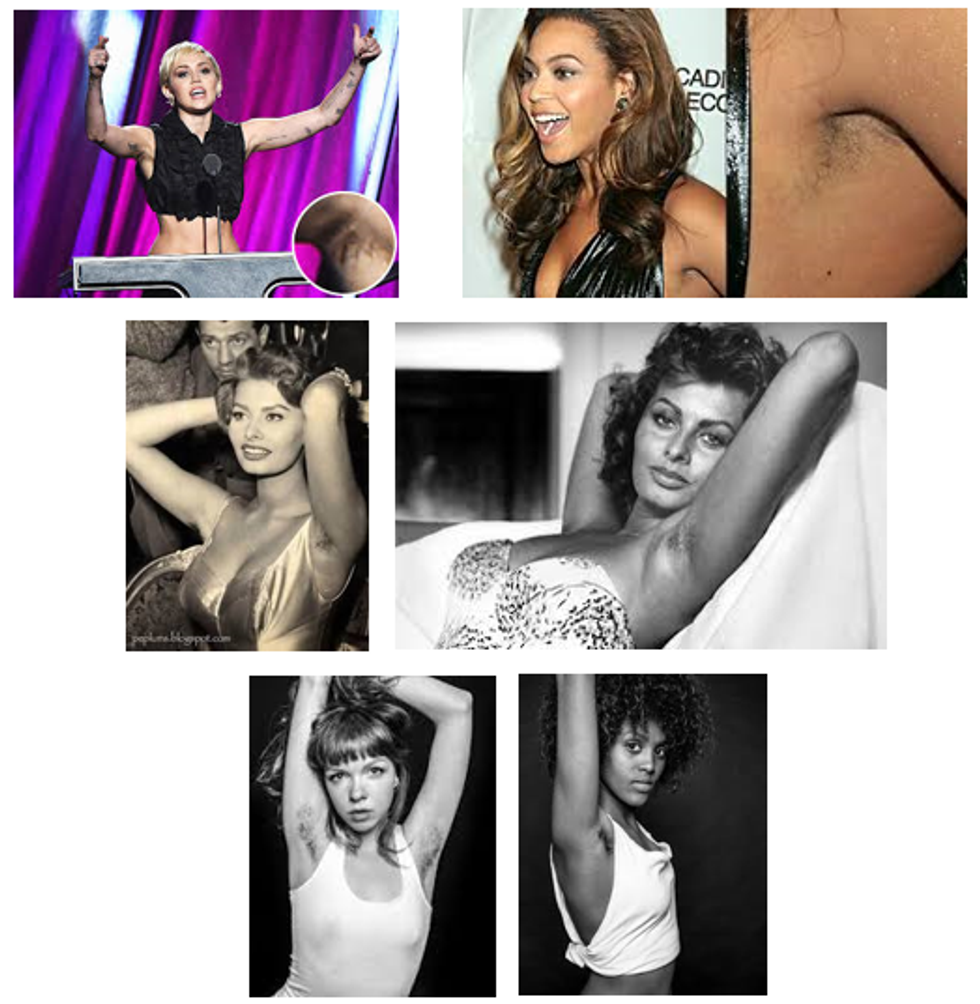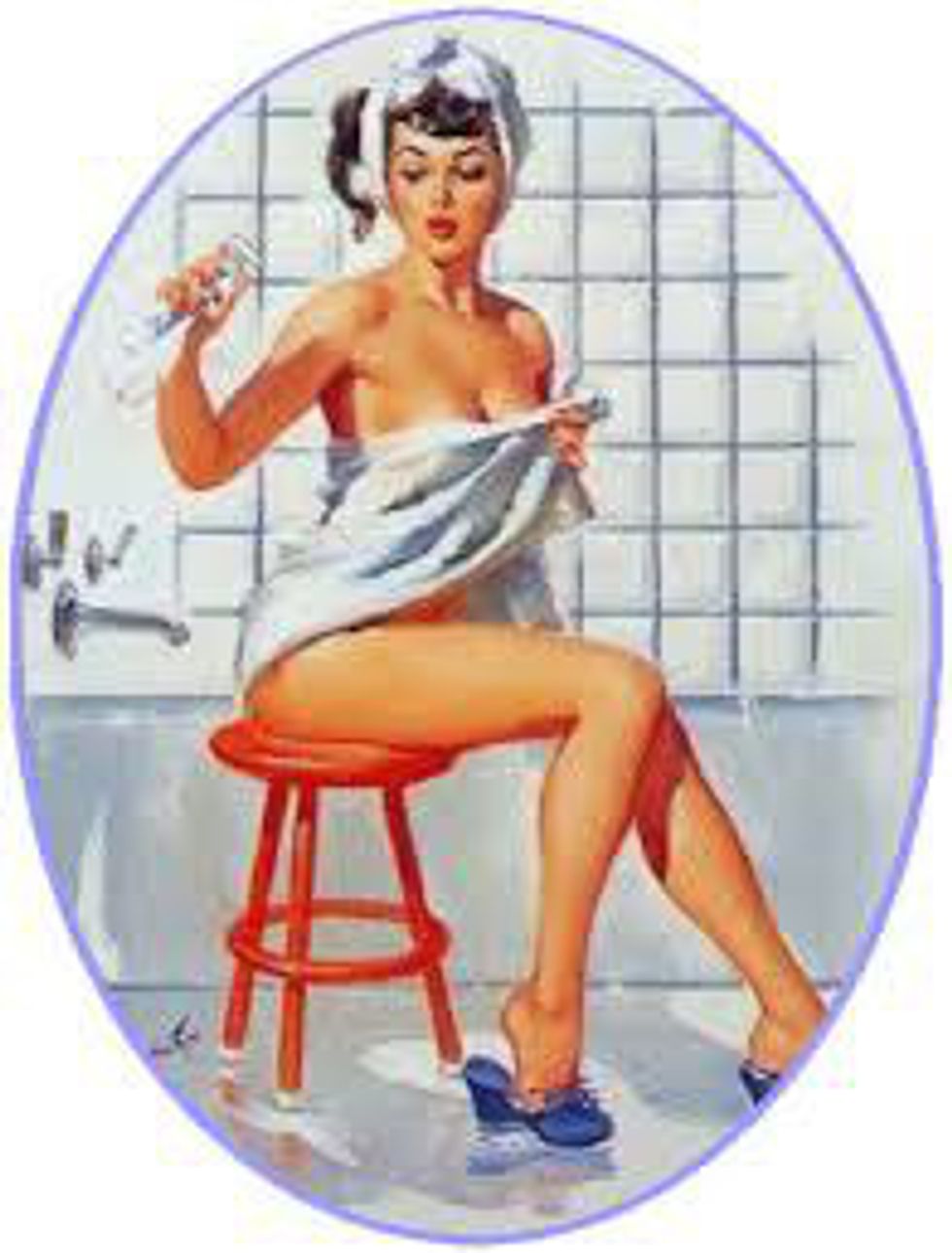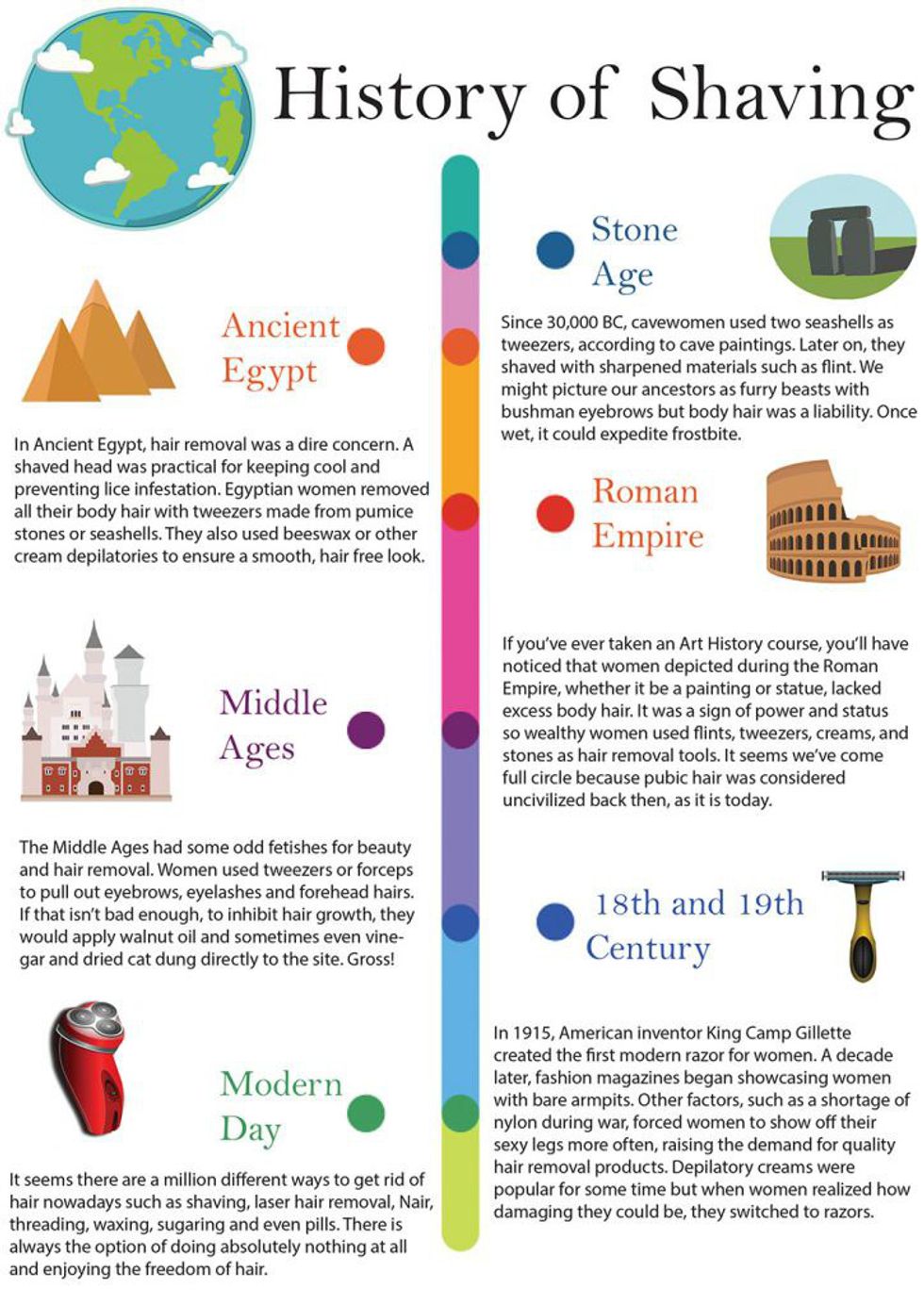Going back to ancient times, as far back as 4000 to 3000 BC, women were removing their pubic hair to keep things down there nice and clean, and free from lice. Fun things they had to deal with back then. Other cultures and religions, often professed that a woman's vagina was dirty and unruly and preached that the removal of pubic hair was a necessary part of proper hygiene. However, nowadays we thankfully don't have to worry about lice, and we shower (hopefully) so removing pubic hair isn't extremely necessary for our personal health. Therefore, it's more of an aesthetic issue.

In the 1870s dermatologists started becoming very interested in the area of hypertrichosis (excessive hair syndrome) among women and their studies trickled out among the American public. During 1915-45 women, especially middle-class white women, were subjected to intense messaging to the female public that in order to be feminine and attractive, you needed to be completely hairless. New fashion trends were coming in which encouraged this notion. Strapless dresses called for hairless underarms, and shortening skirt length encouraged hairless legs.
Fast forward to present day and the no-hair game has only intensified. Thanks to influences such as the Fifty Shades novels and the porn industry, the world expects women to be hairless. Hairless, everywhere. This doesn’t just include legs. It must have happened sometime in the last decade because the amount of time, energy, money and emotion both genders spend on abolishing every hair from their genitals is astronomical. The genital hair removal industry, including medical professionals who advertise their specialty services to those seeking the "clean and bare" look, is booming.
For the most part, the modern world tells young girls and women they are unattractive if they have anything furry or unshaved. Women shave their pubic hair for sex, because some men expect them to. Some women prefer to be bare down there. And some believe it’s just what they’re supposed to do.
But why pick on the lowly pubic hair? A few sociological theories suggest it has to do with cultural trends spawned by bikinis and thongs, certain hairless actors and actresses or a desire to return to childhood or even a misguided attempt at hygiene. The idea of the bare down there trend dying and the modern woman embracing her natural hair—like so many past generations of women before her—is exciting, feminist, and empowering. Even celebrities and models; then and now practice their rights to do whatever they want.
It is a sadly misconceived war. Long ago, surgeons figured out that shaving a body part prior to surgery actually increased, rather than decreased, surgical site infections. No matter what expensive and complex weapons are used – razor blades, electric shavers, tweezers, waxing, depilatories, electrolysis – hair, like crab grass, always grows back and eventually wins. In the meantime, the skin suffers the effects of the scorched battlefield.
Pubic hair removal naturally irritates and inflames the hair follicles left behind, leaving microscopic open wounds. Rather than suffering a comparison to a bristle brush, frequent hair removal is necessary to stay smooth, causing regular irritation of the shaved or waxed area. When that irritation is combined with the warm moist environment of the genitals, it becomes a happy culture medium for some of the nastiest of bacterial pathogens, namely Group A Streptococcus, Staphylococcus aureus and its recently mutated cousin methicillin-resistant Staphylococcus aureus (MRSA). There is an increase in staph boils and abscesses, necessitating incisions to drain the infection, resulting in scarring that can be significant. It is not at all unusual to find pustules and other hair-follicle inflammation papules on shaved genitals.
Additionally, cellulitis (soft-tissue bacterial infection without abscess) of the scrotum, labia and penis as a result of spread of bacteria from shaving or from sexual contact with strep or staph bacteria from a partner's skin. Some clinicians are finding that freshly shaved pubic areas and genitals are also more vulnerable to herpes infections due to the microscopic wounds being exposed to viruses carried by mouth or genitals. It follows that there may be vulnerability to spread of other STDs as well.

Shaving can cause ingrown hairs, razor burn and painful nicks or cuts. Waxing is painful as all hell. Add to that the yearly cost of hair removal supplies including razors, tweezers, shaving cream, wax sessions, creams and the extra amount of time you spend in the bathroom to fix yet another female “issue” and you’re left with a very expensive, messy equation.
When in fact, pubic hair does have a purpose, providing a cushion against friction that can cause skin abrasion and injury, protection from bacteria and other unwanted pathogens, and is the visible result of long-awaited adolescent hormones, certainly nothing to be ashamed of or embarrassed about. Hair is one of the most natural things in the world. It’s nature’s way of protecting us from our surrounding environment and sometimes even from infections. Every mammal has it, so what’s all the fuss about?
Regardless, many say the bare down there trend is a dying fad?According to The Telegraph, women are beginning to embrace their pubic hair. In fact, some women are even choosing to pay thousands of dollars to restore their lasered-off bikini lines.
It’s interesting how the various hair trends keep coming back, always with varied meanings and reasons behind the practice. Since the dawn of humans, removal of unwanted body hair could mean anything from a high-ranking social status to repentance for sins. Take a look at how this has been a “hairy” subject throughout the centuries:
Everything you do is a personal choice. It’s your decision if you want to keep in line with what society finds appealing and appropriate. The same is true for personal “grooming,” like body hair. To wax or relax?... You decide……

























